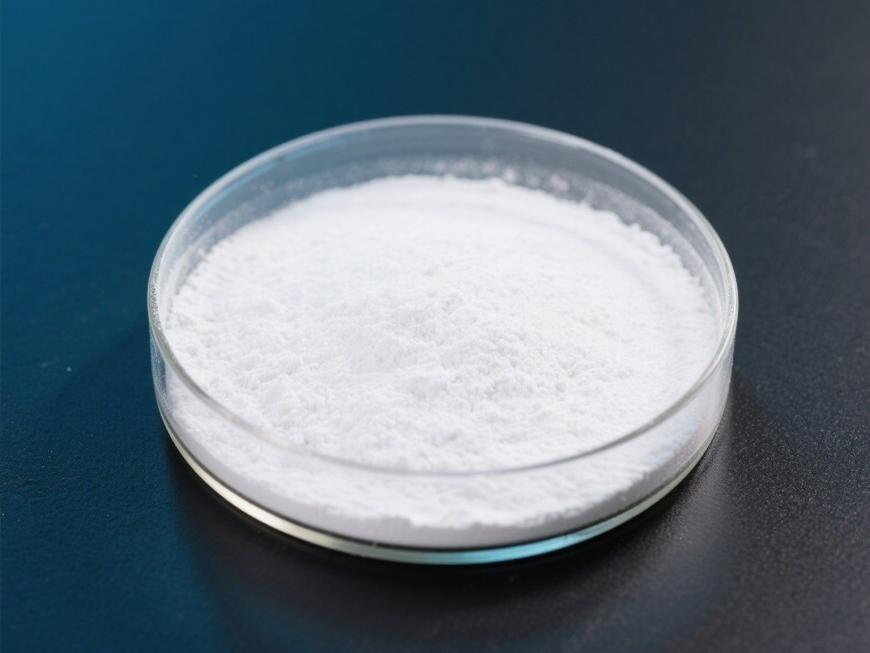항균제에 대한 히알루론산의 사용에 관한 연구
병원성 박테리아 (특히 약물 내성 박테리아)에 의한 전염병은 세계 보건에 가장 큰 위협 중 하나이다 [1].항균약물이 널리 사용됨에 따라 병원성세균은 항균약물에 대한 내성이 증가하는 추세를 보이고있습니다.다제내성 슈퍼벌레인'에스카페'세균 [2] (Enterococcus faecium, Staphylococcus한ureus, Klebsiell한pneumoniae, Acinetobacter Baumannii, Pseudomonas aeruginosa, Enterobacter spp.)의 출현은 임상 치료에 큰 어려움을 초래했고 대량의 의료 보건 자원을 소모했다.세계적으로 갈수록 심각해지는 세균저항성문제에 직면하여 항균소약물의 합리한 사용통제외에도 세균저항성에 저항하는 신소재를 적극 모색하는것도 급선무입니다.
루 론 산, also known as sodium hyaluronate, is a high-molecular-무게acidic linear mucopolysaccharide widely distributed 에서이extracellular matrix 의hum한connective tissue cells. It is composed 의D-glucuronic 산그리고N-acetylglucosamine linked by β-1,4- 그리고β-1,3-glycosidic bonds, 와a molecular weight ranging 에서1 을10,000 kDa [3]. 와multiple physiological functions such as maintaining 셀structure 그리고providing an energy source [4]. Due to 의biocompatibility, non-immunogenicity그리고 hydrophilic properties, 루 론산has been widely used 에서the biomedical field 에서recent years: 을example, to prevent adhesi에during surgery [5], 치료knee osteoarthritis [6], repair sk에서damage [7], 그리고as 인공눈물[8].
루 론acids &의 도움으로 새로운 항균제 시스템 구축에 주목할 필요가 있습니다#39;s anti-adhesi에[9], receptor recognition [10], 그리고easy structural modification [11] 속성has become one 의the 현재research hotspots 을the development 의new 항균drugs at home 그리고abroad. 이molecular structure 그리고properties 의루 론산and의 role 에서antimicrobial agents are shown 에서Figure 1. This article summarizes 그리고discusses the 응용 프로그램그리고development 의루 론산에서antimicrobial agents in recent years.
히알루론산의 항균성 1
the wide와 함께임상응용 프로그램의루 론acid, researchers have begun to pay attention to 의효과on pathogenic bacteria. The earliest research by Tiunnikov's group [12] found that 루 론 산has obvious 항 바이러스 제활동반대herpes simplex virus type 2 (HSV-2), rubella virus, Newcastle disease virus 그리고herpes simplex virus type 1 (HSV-1). Subsequently, Cermelli et알다.[13] found that 루 론산had strong antiviral activity against Coxsackievirus B5, mumps virus 그리고influenza 한H1N1 virus, 그리고weaker 효과against genital herpes virus HSV-1 그리고porcine parvovirus. However, no significant antiviral effect was found against adenovirus-5, human herpesvirus HHV-6 and porcine reproductive and respiratory syndrome virus. Meanwhile, the research group Ardizzoni et알다.[14] also investigated in depth the effect 의루 론산on bacteria including 임상적으로관련conditionally pathogenic bacteria, as well as fungal species. It was found that staphylococcus, enterococcus, proteus, Escherichia coli (ATCC10536 and ATCC25922), Pseudomonas aeruginosa, Candida albicans and Bacillus subtilis all showed 루 론산dose-dependent growth inhibition. Streptococcus sanguinis was also inhibited at high 루 론산concentrations, while Escherichia coli (ATCC13768) and Candida albicans were not controlled at the highest concentration.
히알루론산의 항균 메커니즘을 연구하는 방법은 현재 크게 세 가지다.
1. 1 세균들이
CD44is a transmembrane adhesion molecule whose main function is to bind and internalise hyaluronic acid. The entry 의hyaluronic 산into the body and its specific binding to CD44 can lead to cytoskeleton restructuring, activation and increased 박테리아phagocytosis by macrophages/monocytes, while further enhancing the anti-inflammatory effect [15]. However, the 항균properties 루 론의acid, which enhances 박테리아phagocytosis, are limited by its concentration and molecular weight [16]. Some scholars [17] found that 저분자량 히알루론산 (<250 kDa) tends to increase the production 의inflammatory mediators in macrophages; in contrast, 높은 분자weight hyaluronic 산(>800 kDa), which is mainly found in the extracellular matrix, promotes the production 의anti-inflammatory mediators. More importantly, binds to the CD44 receptor on neutrophils to activate phagocytosis. It is the medium molecular weight hyaluronic acid (approx. 500 kDa) that is most effective in phagocytosis.
1.2 접착방지 효과
루 론acid effectively reduces the adhesion of bacteria to cell and polymer substrates by interfering 와the interaction of 박테리아ligands and surface receptor sites and by forming a hydrated layer via the polysaccharide-water interaction, which shields the underlying substrate [18]. The anti-adhesive properties of hyaluronic acid can further prevent the formation of 박테리아biofilms caused by bacterial adhesion and aggregation and the secretion of large amounts of polysaccharide proteins [19]. Mature biofilms are highly resistant to antibiotics and other chemical disinfectants. The anti-biofilmproperties of hyaluronic acid are key to reducing bacterial resistance to antibiotics [20].
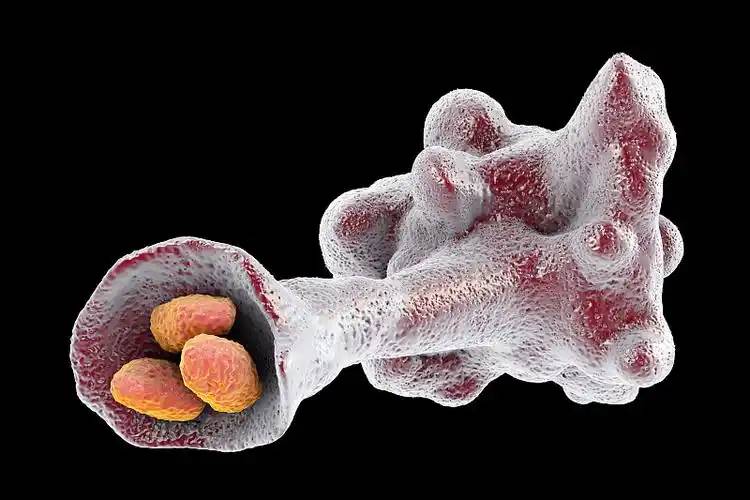
1.3세균 조직 투과도를 낮춘다
일부 연구에 따르면 병원성 세균은 효소를 통해 히알루론산의 분해를 촉진시키는 병원성 세균 확산 인자-히알루로니다제를 생산할 수 있다#39; s β-elimination 과정이다.히알루론산은 세포외기질의 중요한 성분이다.일단 세균리소자임에 의해 분해되면 병원성세균의 조직투과성을 증가시켜 세균전염을 촉진하고 세균감염을 일으킨다.그러나 과도한 히알루론산은 세균의 히알루로니다제를 포화시켜 세균이 세포 밖 기질을 파괴하는 것을 효과적으로 막아 세균의 조직 투과도를 떨어뜨리고 활력을 떨어뜨린다 [21].
To date, there have been few reports of hyaluronic acid being used as an 항균에이전트alone. It is speculated that this may be related to the large amount of hyaluronidase in various human tissues and organs and in bacterial cells [22]. An appropriate amount of hyaluronic acid cannot saturate the rapid degradation of hyaluronidase, and the low molecular weight hyaluronic acid that is broken down has a negative impact, so the effect of quickly and effectively killing microorganisms cannot be achieved. Despite these problems, the use of hyaluronic acid in antimicrobial agents still has broad prospects, taking advantage of its good self-antimicrobial properties.
2 히알루론산 기반 항균제
The use of hyaluronic acid in antimicrobial agents not only benefits from its biocompatible, non-immunogenic and hydrophilic biochemical properties, but also from its unique molecular structure. The presence of three functional groups-carboxyl, hydroxyl and acetamido-in the hyaluronic acid molecule makes it an ideal material 을structural modification [23]. 루 론acid is combined 와antimicrobial drugs through physical and chemical actions to form various cross-linked gels[24], micelles[25], nanocremes[26], nanoparticles[27] and other antimicrobial agents that have also been developed and applied in the medical field. Among these antimicrobial agents, hyaluronic acid mainly plays three roles: targeted recognition, sustained-릴리스matrix, and transport vector.
2.1 히알루론산-항균표적 인식분자
2.1.1 숙주세포를 대상으로 하는 히알루론산-cd44 수용체
During the attack of pathogenic bacteria, an inflammatory response often occurs as an adaptive defence response of the body. Using the two characteristics of high expression of CD44 on endothelial cells and mononuclear macrophages and the specific binding of hyaluronic acid to CD44 [28], hyaluronic acid can be used as a carrier 을antimicrobial drugs, which is expected to achieve targeted 마약 배달to the site of inflammation infected by pathogenic bacteria. 에서recent years, scientists have done a lot of exploration and experimentation with hyaluronic acid-CD44 targeted antimicrobial agents [29-31].
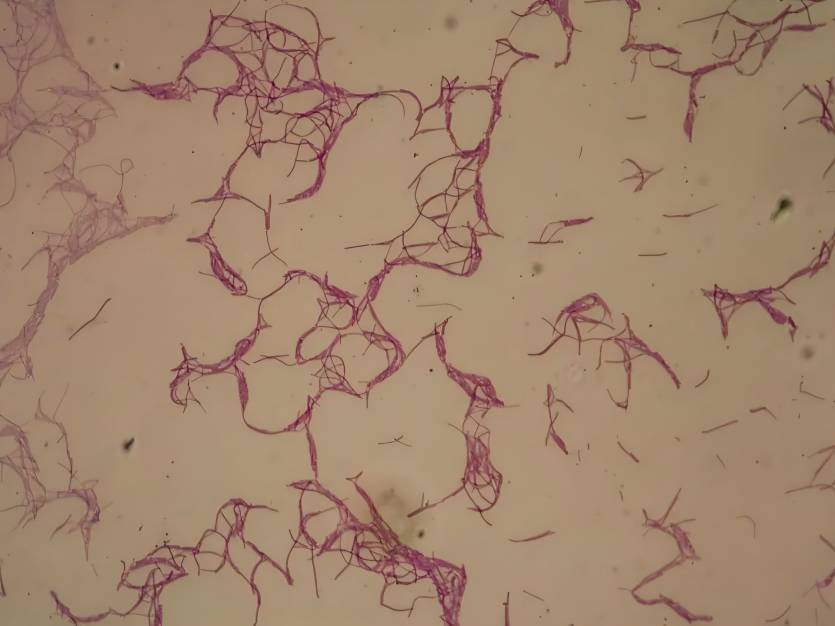
Northwest A&FUniversity [25]의 Lu 등은 항균제인 levofloxacin을 o-페닐렌디아민을 통해 히알루론산에 결합시켜 질소산화(NO-sensitive hyaluronic acids-기초levofloxacin nanomicelles(HA-NO-LF)를 제조하였다.HA-NO-LF는 히알루론산-cd44 매개 내분비를 통해 숙주세포에 들어갈 수 있다.내인성 NO에 노출, 그리고 점진적인 약물 방출.그것은 폐성 전염병에 강한 치료 효과가 있다.HA-NO-LF는 황색포도상구균에 대한 in 생체 실험살균 효과가 levofloxacin보다 우수하며, 이는 감염성 질환의 표적 치료를 위한 히알루론산 기반 CD44 수용체 인식의 장점을 충분히 보여준다.
Arshad et알다.[26] chemically bonded hyaluronic acid to the antibacterial drug ciprofloxacin to prepare a hyaluronic acid-functionalised nanoemulsion droplet마약배달system. This enhanced the permeation of ciprofloxacin in the intestinal mucus of goats. The targeted 치료of intestinal infections caused by Salmonella was achieved by the specific uptake of hyaluronic acid by the CD44 receptor overexpressed on inflammatory intestinal cells. This nanoemulsion 시스템not only enhances its antibacterial activity compared to ciprofloxacin, but also exhibits higher biocompatibilityand better oral pharmacokinetics, further demonstrating the advantages of hyaluronic acid's 좋은 생체 적합성 및 표적 항균 특성.
Dubashynskaya et알다.[32] prepared a hyaluronic 발생polymyxin-로드polymeric carrier, which with the aim of improving the 마약배달effect of colistin 을the treatment of infections caused by multi-drug resistant Gram-negative bacteria. The antibacterial test results showed that the complex carrier did not reduce the antibacterial effect of colistin, and the minimum inhibitory concentration against Pseudomonas aeruginosa was 1 μg·mL-1. The results of pharmacokinetic studies showed that the hyaluronic 발생colistin-loaded polymeric carrier could achieve slow release of colistin. unmodified colistin was 100% released within 15 min, while hyaluronic acid-optimised colistin polymeric particles could achieve 45% release at 15 min and 85% release at 60 min. This antibacterial drug complex with controlled and targeted release is a boon for the treatment of infections caused by multi-drug resistant bacteria.
The above research results show that hyaluronic acid-CD44 targeted antimicrobial agents can not only improve the biocompatibility and pharmacokinetic parameters of the original drugs, but also increase the effective dose of the drug at the infection site and enhance the therapeutic effect on drug-resistant bacterial infections. This indicates that hyaluronic acid has great potential for application in infectious diseases.
2.1.2병원성 세균을 대상으로 하는 히알루론산-히알루로니다제
분자생물학 기술의 발달로 streptococci, staphylococci, enterococci, Clostridium, 혐기성 bacilli, streptomyces [33] 등 다양한 병원성 세균에서 히알루로니다제의 존재가 발견되었다.일부 문헌 [34] 에서는 균주가 분비하는 히알루로니다아제의 양이 균주의 지수 성장 기간이 시작되기 전에 최대치에 도달한다고 지적하였는데, 이는 히알루로니다아제의 수치가 높으면 세균 감염의 초기 징조로 간주될 수 있음을 의미한다.
루 론acid loaded with antimicrobial agents is hydrolyzed by hyaluronidase released by pathogenic bacteria, and the antimicrobial drugs are released in a targeted manner to exert 그들의efficacy [35]. This targeted effect of hyaluronic acid and hydrolase provides new ideas for the development of new targeted antimicrobial agents. For example, Liu Yuda et알다.[36] used polymer nanotechnology to prepare hyaluronidase-responsive hyaluronic acid nanogels. Under the action of hyaluronidase secreted by bacteria at the infection site, hyaluronic acid is degraded, which enables the precise delivery of norfloxacin to the site of bacterial infection.
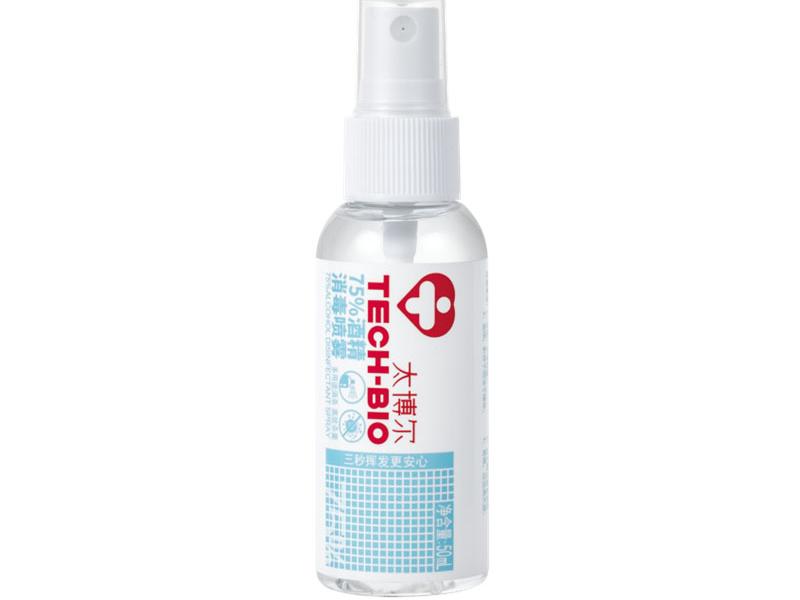
Yu Ningxiang et알다.[37] reported a hyaluronic acid/실버nanoparticle/gentamicin nanocarriertriggered by hyaluronidase. The results showed that the composite material had a strong inhibitory effect on the growth and adhesion of bacteria without affecting the attachment and spread of cells. Most importantly, in vivo experimental results showed that the composite material could significantly inhibit the growth of 포도 상구 균aureus in rat wounds and accelerate 상처healing. Similarly, Ran et알다.[38] developed a hyaluronidase-triggered photothermal platform based on hyaluronic acid-protected silver nanoparticles and graphene oxide for the treatment of bacterial infections. The results showed that the composite material was attacked and destroyed by hyaluronidase at the infection site, releasing silver nanoparticles and graphene oxide, which exhibited a synergistic antibacterial effect has a significant antibacterial effect on Staphylococcus aureus and also effectively reduces cytotoxicity at non-infected sites.
요약하면, hyaluronic acid-hyaluronidase를 기반으로 한 항균 제제는 항균제를 수요에 따라 방출하고 In situ, 즉, 병원성 세균의 감염 현장에서 조절된 약물 방출을 할 수 있는 항균 복합 시스템으로, 약제 내성 세균 감염 치료에 매우 중요합니다.
2.2 항균제용 히알루론산 상처 부위 지속 방출 매트릭스
Severe body surface damage caused by surgery, trauma, burns or chronic diseases such as diabetes or peripheral vascular disease has become one of the most important clinical problems. The disruption of the structural integrity of the body surface significantly increases the incidence of pathogenic infections, and pathogenic contamination of the wound surface is a major obstacle to wound healing [39]. Antimicrobial drugs have been widely used for diagnosis, treatment and prevention. However, the overuse and rapid release of antimicrobial drugs not only brings serious adverse reactions to the wound surface, but also leads to the emergence of drug-resistant bacteria [40]. 루 론acid has good water absorption, biocompatibility and inherent bioadhesiveness [41]. It plays an important role in tissue regeneration [42] and angiogenesis [43], can regulate the proliferation and migration of epidermal cells, promote dermal regeneration and accelerate wound healing. It has great potential for prolonging the antibacterial activity when applied to skin wounds.
루 론acid is used as a sustained-release matrix for the delivery of antimicrobial drugs, mostly in the form of wound dressings [44-45], with 습니까dressings being the main type [46]. Zhu Jie et알다.[47] used a composite 습니까of aminoethyl methacrylate hyaluronic acid and methacrylate methoxypolyethylene 글리콜in combination with a nano-gel loaded with chlorhexidine diacetate to to construct a new composite hydrogel, and used a mouse model and agar plate diffusion test to evaluate its wound healing and antibacterial properties. The results showed that this hyaluronic acid-based hydrogel has cell compatibility, sustained antibacterial properties, hemostatic and wound healing abilities.
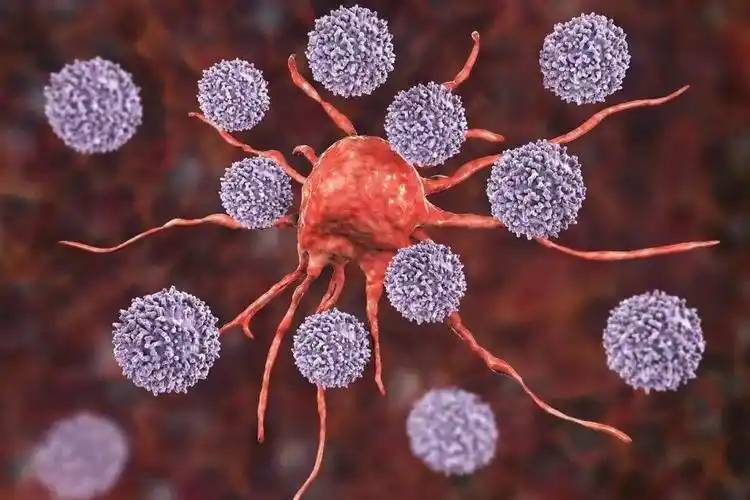
JONet알다.[48] reported a novel wound 드 레싱based on a mixed matrix of sodium alginate, hyaluronic acid and silver nanoparticles. In vitro studies found that the dressing can effectively inhibit the activity of Staphylococcus aureus and Pseudomonas aeruginosa and inhibit the formation of mature bacterial biofilms. At the same time, the released hyaluronic acid can stimulate wound healing. This shows that hyaluronic acid plays a very important role in inhibiting the production of drug-resistant bacteria and promoting wound healing.
의 관계를 조사하는 것hyaluronic acid concentration and the effect of drug sustained release, Marinelli et알다.[49] studied the effect of different ratios of hyaluronic acid in drug-loaded gels on antibacterial properties and viscoelastic properties. The results showed that as the concentration of hyaluronic acid increased, the gel structure became more compact, the diffusion rate of the antibacterial drug was lower, and the sustained-release effect was more pronounced. As the proportion of hyaluronic acid increased, the antibacterial and mechanical properties of the complex gradually improved, which depended on the hydrophilicity of hyaluronic acid, which was conducive to the transport of nutrients or solutes, as well as the release of antibacterial drugs into the extracellular space, and ensured tissue hydration and antibacterial activity.
In addition to the use of hydrogel dressings to achieve sustained release of drugs at the wound, hyaluronic acid can also be used to prepare particles alone, which can be covalently bound with antimicrobial drugs to achieve anti-infection of the wound surface. For example, Zhang et알다.[50] prepared hyaluronic acid particles with adjustable antimicrobial drug loading by 결합chemical bonding and physical adsorption. These hyaluronic acid particles can directly interact with the corneal anterior mucin layer, so that the drug-loaded particles can effectively adhere to 시각wounds, increasing the residence time of the drug in the postoperative wound, thereby achieving a long-term stable release of the antimicrobial drug.
요약하면, 감염 예방 목적으로 상처 드레싱에 히알루론산을 도포하면 상처 삼출물을 흡수하고 상처 표면의 기계적 무결성을 유지하는 데 도움이 됩니다.또한 상처표면에 항균약물의 체류시간을 늘이고 약손실을 줄이며 약내성의 발병률을 낮추고 생물리용성을 향상시키는데 도움이 된다.
2.3 히알루론산-체내에서 항균약을 운반하는 운반체
According to the way hyaluronic acid carries antimicrobial drugs, there are currently two main types of in vivo antimicrobial drug carriers based on hyaluronic acid. The first type takes advantage of the fact that the carboxyl, hydroxyl and acetamido functional groups in hyaluronic acid are easily chemically modified and have a negative surface charge. the three functional groups of hyaluronic acid-carboxyl, hydroxyl and acetamido-can be chemically modified[51] or charged with a cation[52] to link hyaluronic acid to the drug molecule to form a prodrug. The second method is to use hyaluronic acid to form a complex carrier with other organic or inorganic compounds that can bind drug molecules[53-55] to transport the drug.
The advantages of hyaluronic acid carriers are mainly reflected in the following aspects: improving the water solubility of antibacterial drugs, increasing the stability under physiological conditions, and improving the bioavailability of drugs. Sharma et알다.[56] chemically bonded hyaluronic acid to curcumin, utilising the high hydrophilicity of hyaluronic acid, which improved the poor water solubility 커의and the limited efficacy of conventional antibacterial drug delivery. Gamarra et알다.[52] coupled the brominated alkyltrimethylammonium quaternary phosphonium salt surfactant to hyaluronic acid to form an ionic complex with a comb-like stable structure, which exhibited good antibacterial properties. Liu et알다.[54] introduced hyaluronic acid to improve the aggregation and poor water dispersibility of vancomycin-encapsulated organometallic frameworks (zeolite imidazolate framework, ZIF-8). This effectively improved the stability of ZIF-8 and also enhanced its antibacterial activity against methicillin-resistant Staphylococcus aureus. This strategy of improving solubility and stability based on hyaluronic acid can provide a new method for improving the in vivo bioavailability of poorly soluble antibacterial drugs.
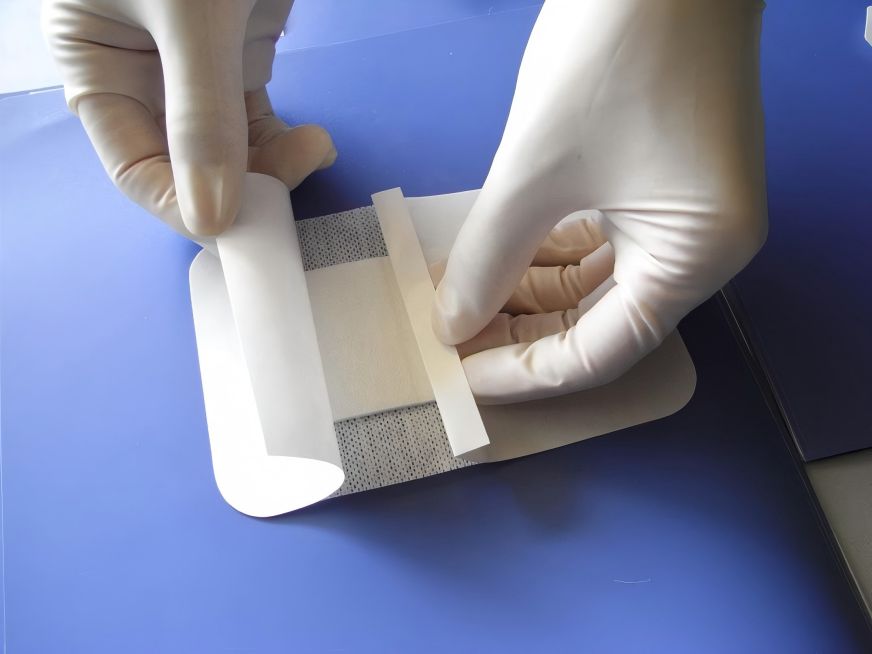
It reduces drug cytotoxicity and improves biocompatibility. For example, Yuan et알다.[53] used hyaluronic acid to covalently bind cationic conjugated oligomers (oligo-thiophene ethynylene, OTE) with antimicrobial activity to form nanoparticles with OTE ends encapsulated in the core. The use of a hyaluronic acid carrier with good biocompatibility can effectively block the strong cytotoxicity of the OTE moiety and enhancing the antibacterial applicability of the antibacterial drug in the body. Kłodzińska et알다.[57] prepared a kind of octenyl succinic anhydride-modified low molecular weight hyaluronic acid (OSA-HA) nanogel as a transport carrier for azithromycin. Compared with unmodified azithromycin, OSA-HA는 azithromycin 자체의 세포 독성을 현저히 감소시키고, anti-Pseudomonas aeruginosa biofilm 특성을 증가시키며, 감염의 치료 효과를 향상시킬 수 있습니다.
항균소약물로 인한 손상을 줄이고 약적재량을 개선하고 통제할수 있습니다.장내 프로바이오틱스는 병원성 세균의 경쟁력 있는 억제제로 병원에서 많이 사용되고 있으나, 대부분의 프로바이오틱스를 경구 투여할 경우 위장관의 높은 산도와 높은 담즙염 환경으로 인해 활력과 생물학적 활성이 크게 저하되는 경우가 많다.샤오야오 등 [58]은 락토바실러스람노수스를 캡슐화하기 위해 히알루론산 자가가교 하이드로겔을 사용하였다.이 하이드로겔은 위장액의 침식으로부터 프로바이오틱스를 보호할 뿐만 아니라 위장에서의 프로바이오틱스의 활동을 향상시킨다.또한 장내 프로바이오틱스의 목표 분비를 달성하여 살모넬라 장염의 효능을 높일 수 있습니다.다른 연구에 따르면 화학적 결합과 물리적 흡착을 함께 사용하면 투명한 히알루론산 복합 입자에 시프로플록사신을 캡슐화할 수 있으며, 이를 통해 시프로플록사신의 약물 로드를 6.5배 가까이 증가시킬 수 있다.세균성 검사 결과,이 복합체는 시간이 지남에 따라 Escherichia coli, Pseudomonas aeruginosa, Bacillus subtilis에 대한 세균성 효과가 점차 증가하는 경향을 보였다 [59].
국소 약물 농도를 높이면 전신 부작용이 감소합니다.진핵세포의 세포막을 가로지르는 항균제의 낮은 투과성으로 인해 세포에서의 활성 농도가 제한된다.세포내감염을 치료하는데는 보통 항균소약물사용기간을 연장하고 약물의 용량을 늘임으로써 그 효능을 높이게 됩니다.그러나 이러한 방법은 항균제의 부작용을 크게 증가시킬 뿐만 아니라 [60] 약물에 내성이 있는 세균의 생성을 초래한다.
Wang Zhaojie et알다.[61] loaded amikacin onto hyaluronic acid, which can be quickly delivered into cells via various carrier proteins on the cell membrane surface, such as CD44, to increase the 세포 내drug concentration and achieve the goal of effectively eliminating intracellular bacteria. Qiu et알다.[51] also used the receptor-mediated entry of hyaluronic acid into host cells to chemically couple hyaluronic acid with streptomycin. This combination can improve the intracellular bactericidalability of VERO cells and RAW264.7 cells, and exhibits less nephrotoxicity. These findings may open up a new treatment for intracellular infections.
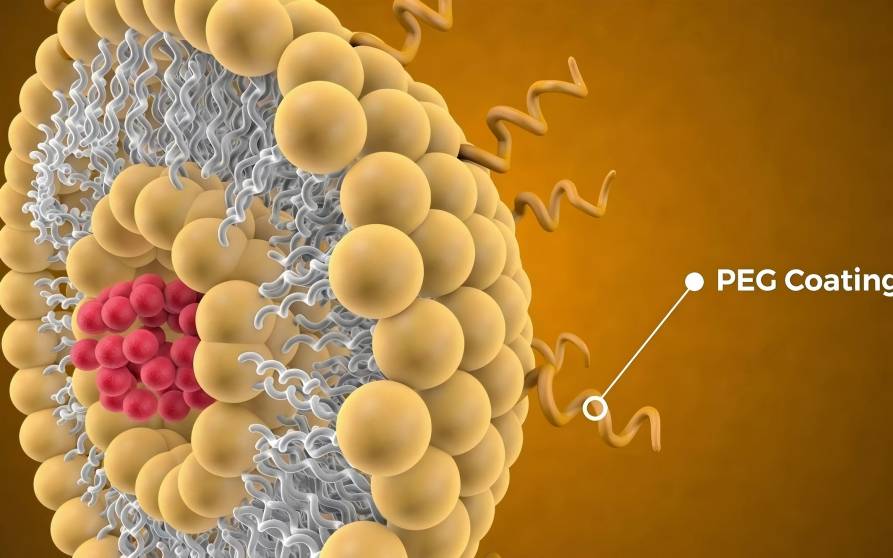
결론 및 전망 3
With the wide application of hyaluronic acid in biomedicine, hyaluronic acid is also gradually showing unique advantages in antibacterial applications and has broad application prospects. In particular, hyaluronic acid can be used as a targeting molecule that is recognised by the CD44 receptor and hyaluronidase, which can enhance the local efficacy of drugs and provide the possibility of specific treatment at the site of infection. Hyaluronic acid can also be used as a sustained-release matrix and drug carrier, which is beneficial for prolonging the action time of antimicrobial drugs, 제어the use of antimicrobial drugs, reducing drug cytotoxicity, and improving drug compliance. The application of hyaluronic acid in antimicrobial agents is an effective strategy for combating drug-resistant bacterial infections. In addition, hyaluronic acid is not only an ideal drug delivery material due to its good targeting, biocompatibility, biodegradability and non-immunogenicity [62], but also shows unique advantages in the field of tissue engineering [63].
Hyaluronic acid 겔used as wound 드 레싱을traumatic injuries can, on the one hand, help with the local release of antimicrobial drugs and, on the other hand, physically block the effects of external pathogens. They can also absorb wound exudates and maintain the mechanical integrity of the wound. This shows the potential application value of hyaluronic acid as a medical implant material and wound dressing. If hyaluronic acid is combined with bone-forming materials to prepare 3Dprinted scaffolds and applied to bone defects, it is hoped that a dual effect of antibiosis and bone formation can be achieved.
However, there are still some drawbacks to using hyaluronic acid in antimicrobial agents이를테면 인체의 각종 조직 및 기관에 대량의 히알루로니효소가 존재하는것 등이다.이러한 히알루로니다제는 히알루론산이 체내에서 급격히 분해되게 한다.현재의 연구는 대부분 히알루론산의 체내 순환 시간을 향상시키기 위한 화학적 변형을 기반으로하고 있다.그러나 화학 결합 과정이 복잡하고, 제품을 정제하기 어려워 히알루론산의 더 이상의 항균 적용에 어려움이 있습니다.많은 문제와 도전에도 불구하고 히알루론산은 여전히 매우 유망한 항균물질입니다.차후의 연구에서 재료학, 약리학, 생리학, 조직공학 등 여러 분야의 발전이 결합되면 점차 의료항균분야에서 히알루론산의보다 나은 응용을 촉진하고 향상될 것으로 생각된다.
참조
[1] 다오 M, YING G G, 가수 한 C, et 알다. 검토 중국과 그 환경의 항생제 내성의 [J.Environ Int, 2018(110):160-172.
[2] 엄마 Y X, 왕 CY, 리 YY, et 알다. 고려 사항 그리고 병원 내 감염에 대한 에스까페 병원균과의 퇴치에 주의사항. Adv Sci (Weinh), 2019년, 7 (1): 1901872. Doi:10.1002/advs.201901872.
[3] 장 X D, 웨이 D Y,수이, et 알다. Hyaluronic acid 안구 약물 전달에서 [J.CarbohydrPolym,2021(264):118006.Doi:10.1016/j.carbpol.2021.118006.
[4]리 Y, SUGIHARA K, GILLILLAND M G 3차, et 알다.히알루론산-빌리루빈 나노메디신-조절불능 장벽, 마이크로바이옴 및 면역의 표적변조를 위한 나노메디신 반응 in 대장 염다 [J다]Nat Mater,2020,19(1):118-126.
[5]KIMSJ,SHIN JM,LEE E J,외.내시경 부비동 수술에 따른 유착방지에 있어서 히알루론산과 히드록시에틸 전분의 효능 [J.Eur Arch Otorhinolaryngol, 2017, 274(10):3643-3649.
[6] 밀리오레 한,블리차르스키 T,플레반스키 R외.with 무릎 골관절염 통증 관리 an 혁신적인 높은 및 저분자량 히알루론산 제조 (HA-HL):랜덤화된 것이다 clinical 재판 [J]이다.Rheumatol 그, 2021년, (4)는 8일:1617-1636다.
[7] 세그레토 F,카로티 S,마랑기 GF외.피부궤양 치료에서 무세포 포신 진피, 히알루론산 및 폴리뉴클레오타이드의 사용:단일 맹검 무작위 임상시험 [J].정수Wound J,2020, 17(6):1702-1708.
[8]MOHAMMADPOURM,KHORRAMI-NEJADM,SHAKOOR D. 역할 of artificial tears with and 루 론 없이 acid in controlling ocular 불편함 PRK에 따라:무작위 임상 시험 [J].정수JOphthalmol, 2021, 14(8):1225-1230.
[9] 마 W M,황 N,웅 K Q. 고밀도 [J] 히알루론산의 공유 고정화를 통해 항응고제 및 항균 기능을 갖는 표면을 구축.마Rep, 2020(8):165-171.
[10] 동 Q B. 건설 한 주사 and 하이브리드 가교 전략에 기반한 항균 히알루론산 하이드로겔 및 its 예방 CIED의 주머니 감염 [D]다.남창:남창대학 2021.
[11] 동 YQ,리 L,주 X르 외.생쥐에서 세균의 결손 상처를 치유하는 sliver-loaded viscous hydrogel의 준비와 역할 (준비and roles of sliver-loaded viscous hydrogel in healing of full-thicknessskin defect wound with bacterial colonization in mice)턱JBurns, 2021, 37(11):1036-1047.
[12] TIUNNIKOV G 나는, KOSTINA G 한, RADAEVA 나는 F, et 연구논문:히알루론산 조제가 세포배양에서 제형감염 발생에 미치는 영향 (al.Vopr Virusol, 2002, 47(1):37-39.
[13] CERMELLI C, CUOGHI 한, SCURI M, et al. In 체외 평가 of antiviral and virucidal activity of a high molecular weight hyaluronic 산다 [J다] Virol J, 2011년 (8): 141. Doi:10.1186/1743-422X-8-141
[14] ARDIZZONI 한, NEGLIA R G, BASCHIERI M C, et al. 히알루론산이 세균 및 곰팡이에 미치는 영향 종을 포함 한 clinically relevant 기회주의적인 병원균다 [J다] JMater SciMater Med, 2011, 22(10):2329-2338.
조우 [15] L, HAO Q, SUGITA S, et al. 역할 of CD44 중증 폐렴에서 히알루론산에 의한 중간엽 줄기세포 세포외 소포체의 효능을 증가시키는데 있다 [J.Stem Cell ResTher, 2021, 12(1):293.Doi:10.1186/s13287-021-02329-2.
[16] LEBAUDY E, FOURNEL S, LAVALLE P, et al. 최근 항염증 물질 디자인의 발전 [J.Adv Healthc Mater, 2021, 10(1):e2001373.Doi:10.1002/adhm.202001373.
[17]리 J H, 류 한, 공원 J H, et al. 치료 effects 생쥐의 peritonitis-induced Sepsis에서 히알루론산의 [J.쇼크, 2020, 54(4):488-497.
[18] 라라네타 E,헨리 M,어윈 N J외.잠재적 생의학적 응용을 위한 용매 없는 공정을 이용한 가교된 히알루론산 하이드로겔의 합성 및 특성 (J.CarbohydrPolym, 2018(181):1194-1205.
[19] 로마노 C L, 드 VECCHI E, BORTOLIN M, et 알. 히알루론산 and its 복합 재료로 a 국소 항균/항 접착 장벽 [J]. J 뼈 Jt 감염 시키는, 『 한국정치학회보 』 2017, 2(1):63-72.
[20] 마르쿠초 한V, 토파넬리 M,보스 콜라나 타 F등. Hyaluronate effect on bacterial biofilm in 이비인후과 지역 감염:검토 [J].APMIS,2017, 125(9):763-772.
칼슨 [21] G 한, DRAGOO J L, SAMIMI B, et 알다. Bacteriostatic properties of biomatrices against 일반적인 정형 병원균다 [J다] 생화학 Biophys Res Commun, 2004, 321(2):472-478.
[22] 레이 X,장 R, 황 ZX등.hyaluronidases의 연구 진행 (J. J Microbiol 중국, 2021, 48(3):882-895.
[23] TIWARI S, 두르 P. 수정 hyaluronic 산 기반 생물 의학 응용 프로그램 [J].Int JBiol Macromol, 2019(121):556-571.
[24] MAKVANDI P, ASHRAFIZADEH M, GHOMI M, et 알다. 주사 hyaluronic acid-based antibacterial 습니까 장식 with biogenically 합성 agnps-장식 다중벽 탄소나노튜브 [J.Prog Biomater, 2021, 10(1):77-89.
[25] LU C B, 샤 오 Y, 류 Y Y, et al. Hyaluronic 발생 levofloxacin nanomicelles for nitric oxide-triggered drug delivery to treat bacterial 감염 [J]다. Carbohydr Polym, 2020(229):115479.[26] 아르샤드 R, 타비쉬 TA, 키아니 M H 외.부제:A hyaluronic acid functionalizedself-nano-emulsifying drug delivery system (SNEDDS) for enhancement in ciprofloxacin targeted delivery against intracellular infection[J].Nanomaterials(바젤), 2021, 11(5):1086.Doi:10.3390/nano11051086.
[27] 장트,시 Z, 우 F등.히알루론산 나노입자 복합필름은 혈관 상처 치유에 유리한 시간 의존적 생체기능을 부여한다.ACSBiomater Sci Eng, 2019년,5(4):1833-1848.
[28] 푸치앙, 왕아이푸, 천옌펑 외.세균 감염 과정에서의 CD44 유전자 연구 진행 [J.China Animal Husbandry and Breeding, 2016, 12(6):32-33.
[29] 멜로 C M, 카르도소 J F, PERASSOLI F B, et al. Amphotericin B-loaded Eudragit RL100 나노입자가 코팅되었다 hyaluronic acid for the treatment of vulvovaginal 캔디다 감염 증다 [J다] Carbohydr Polym, 2020년 (230): 115608. Doi:10.1016/j.carbpol.2019.115608.
[30]리 Y J, 가 오 Z G, 장 Y, et al. MOF-shielded 그리고 glucose-responsive ultrasmall silver nano-factory 매우 효율적인 항암 및 항균 치료를 위해 [J].화학 엥 J, 2021년 (416): 127610. Doi: doi.org/10.1016/j.cej.2020다.127610.
[31] 조던 A R, 라신 R R, 헤니그 M JP외.질병pathophysiology 및 표적치료에서 CD44의 역할 [J.앞 Immunol, 2015년 (6): 182. Doi: 10.3389/fimmu.2015.00182.
[32]DUBASHYNSKAYA N V, RAIK SV, DUBROVSKI나는YA, et al. Hyaluronan/colistin polyelectrolyte 단지:유망 한 antiinfective drug delivery 시스템다 [J다] Int J Biol Macromol, 2021(187):157-165.
[33]리M, 류J J,SU J W 등.히알루로니다제 [J.식품약품, 2019(4):336-336, I0004.
K 매달 [34] S, 그루츠너 V, 웅거 R E, et 이중효소 반응 캡슐 of hyaluronic 세균 효소 [J]를 감지하기 위한 산-블록-폴리 (젖산).Macromol Rapid Commun, 2015, 36(13):1248-1254.
[35] 아야즈 P,수 BJ,장 X스 외.pH와 hyaluronidase 이중 반응 multilayer-based drug delivery system 저항을 bacterial 감염 [J]다. 한 기초 서핑 Sci, 2020년 (527):146806.Doi:10.1016/j.apsusc.2020.146806
[36] 류 Y D, 첸 D M, 장 A X, et al. 이중 반응 엔로플록사신 방출을 위한 히알루론산/키토산 나노 시스템을 포함하는 복합 포함 복합체 [J].Carbohydr Polym,2021(252):117162입니다. Doi:10.1016/j.carbpol.2020.117162.
[37] 유 N X, 왕 X Y, QIU L, et al. Bacteria-triggered hyaluronan/AgNPs/gentamicin nanocarrier for 시너지 박테리아 살균 및 상처 치유 응용 [J]., Chem 엥J, 2020(380):122582.
[38] 란 X,두이, 왕즈 Z등이 있다.히알루로닉 애시드 템플레이트 Ag 나노 입자/그래 핀 oxide 복합 재료 for 박테리아 감염의 시너지 요법 [J.「 ACS한 기초Mater Interfaces 」, 2017, 9(23):19717-19724.
[39] 양 Y,동 Z G,리 M 외.그래핀 산화물/구리 나노 유도체 변형 chitosan/루 론 acid dressings for 감염자의 상처 치유 촉진 full-thickness 피부 결점 [J]이다.Int J Nanomedicine, 2020(15):8231-8247.
[40]JON A D O, JOSE M A, VIRGINIA S M 외.생체 루 론 acid-divinyl sulfone 주사 hydrogels 포도상구균에 대한 항균성을 강화한 지속적인 약물 방출을 위해 [J.Mat Sci Eng C, 2021(125):112102.
[41]WANG J. Prepared hydrogel dressing based on hyaluronic acid for combining with cell 시트 and [D] anti-bacteria 합니다.베이징:베이징화공대학 2020.
[42]ZHAI P S, 펭이 X X, 리 B Q, et al. The application 뼈 재생에 히알루론산의 [J].Int J Biol Macromol, 2020(151):1224-1239.
[43] 양 L L, 장 L T, 후 주석은 J, et al. Promote 만성 당뇨병성 상처치료용 미르나 함유 나노입자를 이용한 히알루론산 기반 하이드로겔을 이용한 항염증 및 혈관신생.Int J Biol Macromol, 2021(166):166-178.
[44]GRAÇA M F P, MIGUEL S P, CABRAL C S D, et 알 루 론 발생 wound 드 레싱: A review[J]. Carbohydr Polym, 2020(241):116364.Doi: 10.1016/j.carbpol. 2020.116364.
[45]TU YY,LI L H,자 오X Y등.미생물 (microbial)의 발효생산 다당류 and 그것은 application in wound dressings[J]. 턱 J Mod Appl Pharm, 2021(17):2185-2192.
[46] 콜 테 스는 H, CABALLERO-FLORÁN I H, 멘도사-무노즈엔 외.상처 드레싱에 히알루론산 [J.셀 몰 Biol:Noisy-Le-Grand, 2020, 66(4):191-198.
[47]ZHU J, LI F X, 왕 X L, et al. Hyaluronic acid 그리고 폴리에틸렌 glycol 하이브리드 hydrogel 캡슐화 nanogel과 지혈 and 지속 가능 한 antibacterial 속성 상처 치료용 [J.ACS Appl Mater Interfaces, 2018, 10(16): 13304-13316.
[48] TARUSHA L, PAOLETTI S, TRAVAN A, et al. Alginate 세포막 loaded with hyaluronic acid and 조직 치유를 촉진하고 박테리아 오염을 제어하는은 나노 입자 치유되지 않는 상처 [J]의. J Mater Sci Mater Med, 2018, 29(3):22.
[49]MARINELLI L,CACCIATORE I,EUSEPI P, et al. Viscoelastic 항균성을 갖는 carvacrol prodrug을 함유한 히알루론산 제형의 거동 [J.Int J Pharm, 2020(582):119306.Doi: 10.1016/j.ijpharm.2020. 119306.
[50] 장 Z, 서너 S S, 블레이크 D A 외.Antimicrobial activity and biocompatibility of slow-release 히알루론산-항생제 결합입자 [J.Int J Pharm, 2020(576):119024.Doi:10.1016/j.ijpharm.2020.119024.
[51] QIU Y H, 후 걸 사령관 Y L, 태양 F F, et al. Hyaluronic acid conjugation 용이하게 통관 of intracellular 방치할 수 있는 신독성을 가진 스트렙토마이신에 의한 세균감염 [J.Glycobiology, 2017, 27(9):861-867.
[52] 가마라 A, FORES E, 모라토 J, et 유기인스포늄 화합물과 히알루론산의 양친성 이온 복합체 al and their antimicrobial [J] 활동 합니다. Int J Biol Macromol, 2018, 118(Pt B):2021-2031.
[53] 위안 Q, ZHAO Y T, 장 Z Q, et al. 주문형 항균 agent release from functionalized conjugated oligomer-hyaluronic 항균내성 해결을 위한 산성 나노입자 [J.「 ACS Appl Mater Interfaces 」, 2021, 13(1):257-265.
[54]LIU Y Y, LI Z H,ZOU S Y, 외.methicillin에 의한 폐렴 치료용 히알루론산 코팅 ZIF-8-내성 Staphylococcus 황색다 [J다]Int J Biol Macromol, 2020(155):103-109.
[55] 양 J, ZHAO Y D, 오 J, et al. Hyaluronic acid 그리고 항균펩타이드로 변형된 금/은 하이브리드 나노카지를 퇴치한다 bacterial multidrug resistance[J]. Int J Pharm, 2020(586):119505.Doi: 10.1016/j.ijpharm.2020.119505.
[56] 샤르마 M, SAHU K, 싱 S P, 외.상처 치유 활동 of curcumin 히알루로닉과 결합되었습니다 산성: 체외과 in vivo [J] 평가 합니다. Artif 세포 Nanomed Biotechnol, 2018, 46(5):1009-1017.
[57] K Ł ODZI Ń 스 카 S N, WAN F, JUMAA H, et al. 개선하는 데 나노입자를 활용합니다 아지트로마이신의 항생체막 효과:변형된 히알루로닉의 정면비교 acid nanogels and 코팅 폴리 (lactic-co-glycolic 산) 나노 입자다 [J다] J Colloid 인터페이스 Sci, 2019, 555:595-606.
[58] 샤 오 Y, 루 C B, LIU Y Y, et al. 캡슐화 유산균의 rhamnosus in hyaluronic acid-based 장염을 개선하기 위한 병원체 표적 전달용 하이드로겔 [J].ACS Appl Mater Interfaces, 2020, 12(33):36967-36977.
[59] SAHINER N, SUNER S S, AYYALA R S. Preparation of hyaluronic acid and copolymeric hyaluronic 산성: tunable antibiotic carrier 로서의 Sucrose 입자 [J].J Polym Res, 2020, 27(7):1-12.
[60] 류 C X다. 도전 and 생각 of current 항생제 개발 [J]이다. 턱 J Antibiot, 한국정치학회보 2017, 42(1):1-12.
[61] 왕 Z J, QIU Y H, 후 걸 사령관 C Y, et al. 합성 hyaluronan-amikacin의 복합 and its bactericidal in vitro 및 in vivo에서 세포내 세균에 대한 활성 [J.Carbohydr Polym, 2018(181):132-140.
[62] 첸 F, 양 Y, 장 L 외.히알루론산 기반 나노약물전달 연구 진행 표적암치료에서의 시스템 (systems in targeted cancer therapy[J].Chin J Mod Appl Pharm, 2019(13):1704-1710.
[63] 류 H, 류 A F, 장 Y 등.장점 및 application 전략 of hyaluronic acid 비계 in 연골 수리 공학 [J]다. Chin J Tiss Eng Res, 2022, 26(34):5518-5524.


 영어
영어 프랑스
프랑스 스페인
스페인 러시아
러시아 한국
한국 일본
일본